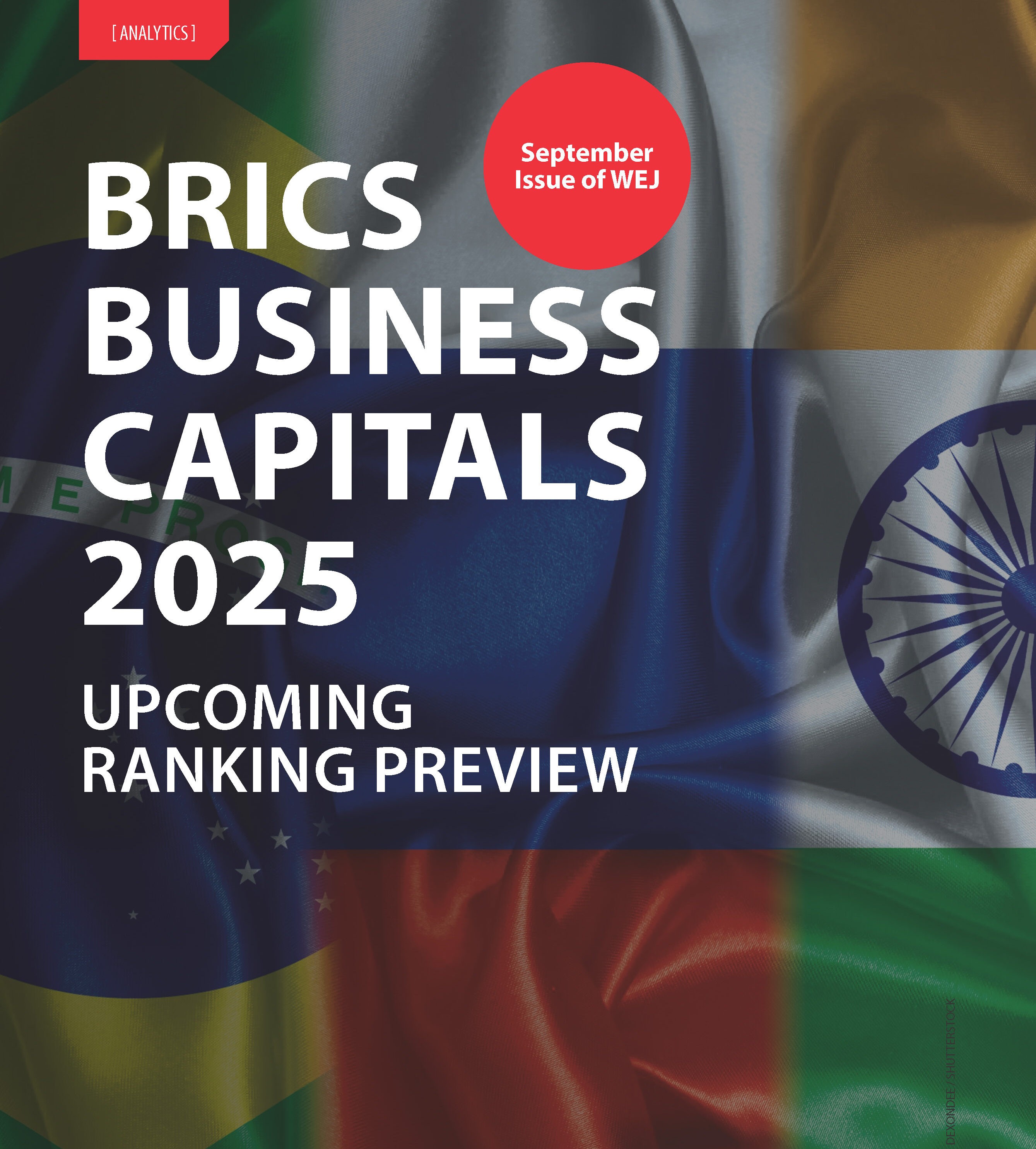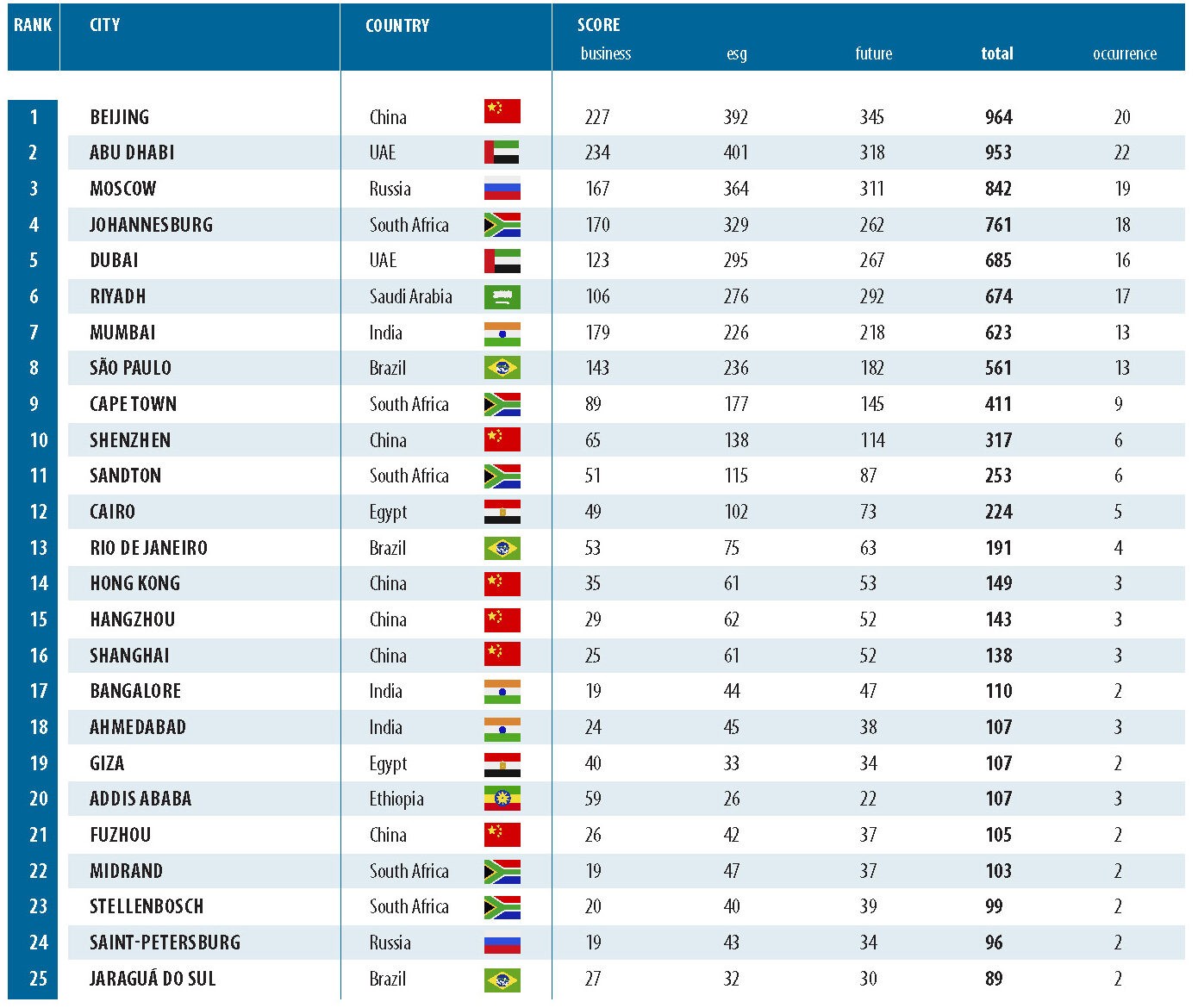The Cities Shaping the Future: BRICS Business Capitals Ranking Returns
The world is becoming increasingly urban. Major BRICS cities are shaping new chains of economic influence, technological transformation, and ESG adaptation. In 2024, World Economic Journal introduced the first edition of the BRICS Business Capitals — a ranking of the most influential urban economic hubs. An updated edition will be released in the September 2025 issue.
BRICS Business Capitals is a specialized sub-ranking that highlights key cities across BRICS countries actively redefining the global economic landscape.
The evaluation is based on four primary categories:
• Gross Regional Product (GRP): economic size and growth rates;
• Technological Infrastructure: level of digitization and innovation clusters;
• Urban ESG Agenda: waste management, green zones, sustainable transport;
• Role as Corporate and Investment Hubs: number of large company HQs, business density, financial activity.
In 2025, the ranking will be expanded with new cities and updated metrics to reflect the growing influence of BRICS+.
Last Year’s Highlights: Which Cities Led the BRICS Urban Economy?
Key Insights from the 2024 Edition:
• Beijing demonstrated unmatched combined strength: GRP, innovation, and global outreach;
• Abu Dhabi achieved the highest ESG rating and urban resilience;
• Moscow and Johannesburg maintained their roles as regional business hubs;
• Shenzhen, while smaller in scale, emerged as a frontrunner in digital transformation.
Top-25 Cities in the 2024 BRICS Business Capitals Ranking
BRICS+ in Motion: What’s New in the 2025 Edition
Key Announcements:
• Jakarta, Cairo, and Addis Ababa — key capitals from newly joined BRICS+ members — will debut in the 2025 edition;
• Introduction of a new “Urban ESG Composite Index”, reflecting the environmental, mobility, digital, and investment attractiveness of each city;
• New indicators: GRP per capita and Corporate Density Index (number of leading company HQs per city);
• A comparative infographic “Financial Weight vs ESG Infrastructure” will showcase the balance of economic power and sustainability across BRICS capitals.
The updated ranking will be published in the September 2025 issue of World Economic Journal.
Don’t miss the definitive overview of the evolving urban power map — only in the September issue of WEJ
Stay informed at:
https://world-economic.com/
For nominations, partnerships, and data contributions:
awards@world-economic.com
PHOTO: RUMANA FERDOUSI / SHUTTERSTOCK, PHOTO: METAMORWORKS / SHUTTERSTOCK, PHOTO: CHIEW / SHUTTERSTOCK.
WEJ MEDIAKIT- ENG
Stay Ahead with World Economic Journal — Anytime, Anywhere
Get full access to expert insights, global analysis, and exclusive features from every issue of World Economic Journal.
Download the journal on your preferred platform:
Google Play: WEJ on Magzter
Magzter Web: World Economic Journal on Magzter
- Apple App Store: World Economic Journal Magazine
Subscribe now and never miss an issue. Knowledge. Insight. Impact.
Available in Leading Digital Libraries Worldwide
World Economic Journal is not only available through major digital platforms — it is also part of hundreds of public, academic, and institutional digital libraries across the globe.
You can access the journal through:
London Public Library, Toronto Public Library, ZINIO-powered U.S. and Canadian networks
British Council Libraries, Universities such as Southampton, Leeds, and DuPage
Major city libraries in Washington, Chicago, Philadelphia, Houston, Los Angeles, Berlin, Tokyo, Illinois, Switzerland, Malta, Johannesburg — and many more.
We are proud to be present in the global knowledge ecosystem — from government research centers to digital reading networks in over 70 countries.
If your institution has a digital library, World Economic Journal is likely already there.





